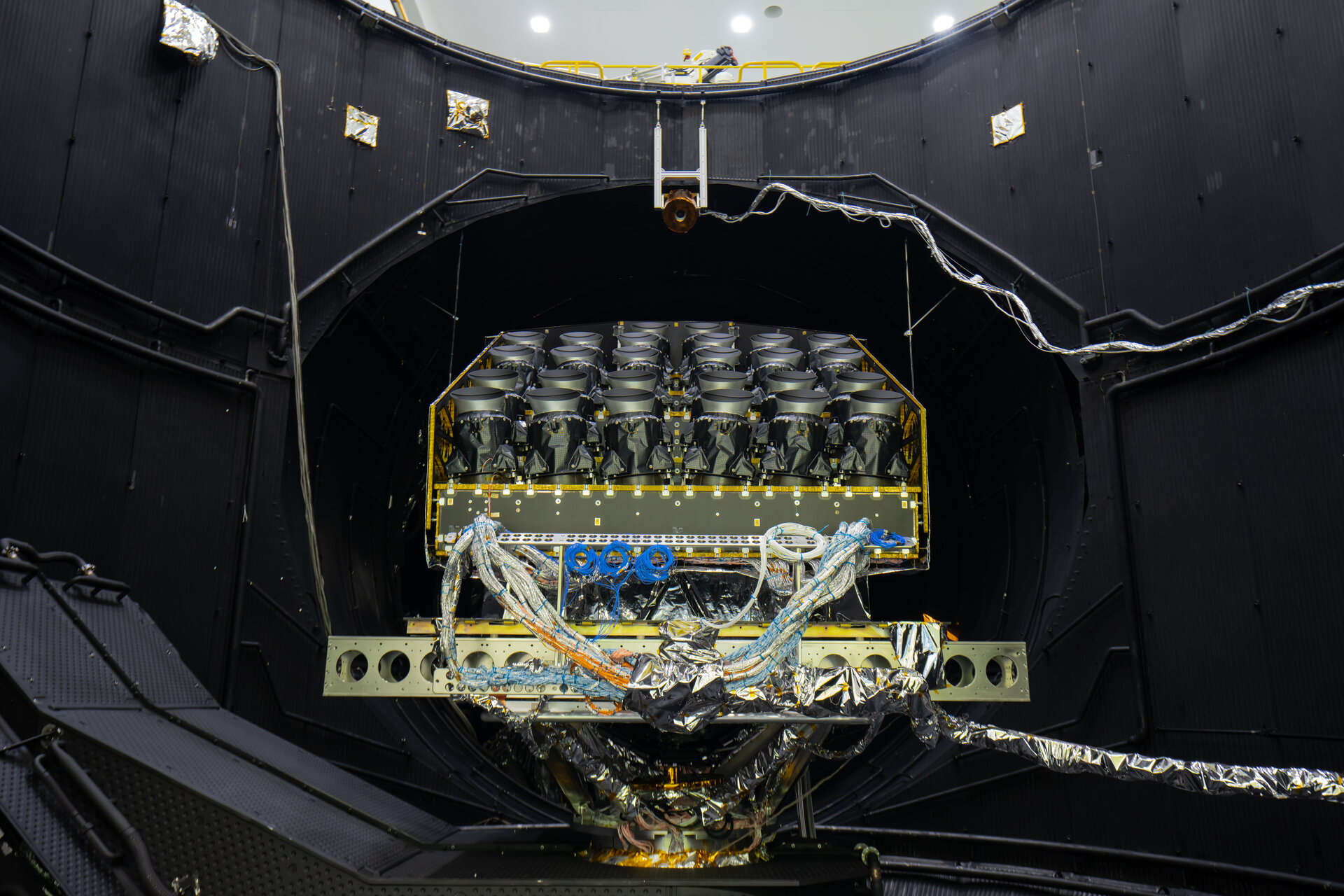Accept all cookies Accept only essential cookies See our Cookie Notice

About ESA
The European Space Agency (ESA) is Europe’s gateway to space. Its mission is to shape the development of Europe’s space capability and ensure that investment in space continues to deliver benefits to the citizens of Europe and the world.
Highlights
ESA - United space in Europe
This is ESA ESA facts Member States & Cooperating States Funding Director General Top management For Member State Delegations European vision European Space Policy ESA & EU Space Councils Responsibility & Sustainability Annual Report Calendar of meetings Corporate newsEstablishments & sites
ESA Headquarters ESA ESTEC ESA ESOC ESA ESRIN ESA EAC ESA ESAC Europe's Spaceport ESA ESEC ESA ECSAT Brussels Office Washington OfficeWorking with ESA
Business with ESA ESA Commercialisation Gateway Law at ESA Careers Cyber resilience at ESA IT at ESA Newsroom Partnerships Merchandising Licence Education Open Space Innovation Platform Integrity and Reporting Administrative Tribunal Health and SafetyMore about ESA
History ESA Historical Archives Exhibitions Publications Art & Culture ESA Merchandise Kids Diversity ESA Brand Centre ESA ChampionsLatest
Space in Member States
Find out more about space activities in our 23 Member States, and understand how ESA works together with their national agencies, institutions and organisations.
Science & Exploration
Exploring our Solar System and unlocking the secrets of the Universe
Go to topicAstronauts
Missions
Juice Euclid Webb Solar Orbiter BepiColombo Gaia ExoMars Cheops Exoplanet missions More missionsActivities
International Space Station Orion service module Gateway Concordia Caves & Pangaea BenefitsLatest
Space Safety
Protecting life and infrastructure on Earth and in orbit
Go to topicAsteroids
Asteroids and Planetary Defence Asteroid danger explained Flyeye telescope: asteroid detection Hera mission: asteroid deflection Near-Earth Object Coordination CentreSpace junk
About space debris Space debris by the numbers Space Environment Report In space refuelling, refurbishing and removingSafety from space
Clean Space ecodesign Zero Debris Technologies Space for Earth Supporting Sustainable DevelopmentApplications
Using space to benefit citizens and meet future challenges on Earth
Go to topicObserving the Earth
Observing the Earth Future EO Copernicus Meteorology Space for our climate Satellite missionsCommercialisation
ESA Commercialisation Gateway Open Space Innovation Platform Business Incubation ESA Space SolutionsLatest
Enabling & Support
Making space accessible and developing the technologies for the future
Go to topicBuilding missions
Space Engineering and Technology Test centre Laboratories Concurrent Design Facility Preparing for the future Shaping the Future Discovery and Preparation Advanced Concepts TeamSpace transportation
Space Transportation Ariane Vega Space Rider Future space transportation Boost! Europe's Spaceport Launches from Europe's Spaceport from 2012Latest

Plato’s cave: vacuum test for exoplanet detection
Thank you for liking
You have already liked this page, you can only like it once!
A test version of the payload module of ESA's exoplanet-detecting Plato spacecraft underwent a prolonged vacuum soak within Europe’s largest thermal vacuum chamber, to evaluate its endurance of space conditions.
There are tasks in space where multiple smaller imagers are better than one big equivalent. ESA PLAnetary Transits and Oscillations of stars mission, Plato, is to detect Earth-scale exoplanets using an array of 26 cameras to perform prolonged observations of target stars. This combination of cameras will pick up tiny variations in their light output due to the transit of exoplanets across them.
But in order for the mission to perform as planned, the optical bench securing these cameras in place must maintain a fixed optical-quality rigidity, despite the extreme conditions of deep space, as Plato operates from out at the second Sun-Earth Lagrange point, 1.5 million km from Earth.
So this initial ‘structural and thermal model’ of Plato’s optical bench has been built specifically for testing in space-like conditions. Testing includes ‘thermal cycling’ to assess how the optical bench responds to the in orbit temperature variations, and ‘thermal balance’ to measure the operating temperature that it maintains in these conditions.
Testing took place inside ESA’s Large Space Simulator, the largest thermal vacuum chamber in Europe, based at the Agency's ESTEC establishment in Noordwijk, the Netherlands. Standing 15m high by 10m wide the LSS is cavernous enough to encompass an upturned London double decker bus.
Once the chamber’s top and side hatches are sealed, high-performance pumps create a vacuum a billion times sparser than standard sea-level atmosphere, and this can be held for weeks at a time during test runs. At the same time liquid nitrogen is pumped through the walls to recreate the cold of space in the shade.
The LSS testing began at the end of March and was successfully completed in the third week of May.
This current test campaign has been preceded by environmental testing of the Plato camera design, performed both at ESA’s ESTEC Test Centre and at SRON, the Netherlands Institute for Space Research.
For the flight version of Plato, thermal vacuum testing of the 26 cameras required will be divided between SRON in Groningen, IAS in Paris and INTA in Madrid, running this autumn into 2024, to be ready for Plato’s 2026 launch date.
-
CREDIT
ESA-Remedia -
LICENCE
ESA Standard Licence

Planet-hunting eye of Plato

Plato’s 24 newly installed cameras – side view

Plato’s artist impression, front view

Plato in ESA's LEAF room















 Germany
Germany
 Austria
Austria
 Belgium
Belgium
 Denmark
Denmark
 Spain
Spain
 Estonia
Estonia
 Finland
Finland
 France
France
 Greece
Greece
 Hungary
Hungary
 Ireland
Ireland
 Italy
Italy
 Luxembourg
Luxembourg
 Norway
Norway
 The Netherlands
The Netherlands
 Poland
Poland
 Portugal
Portugal
 Czechia
Czechia
 Romania
Romania
 United Kingdom
United Kingdom
 Slovenia
Slovenia
 Sweden
Sweden
 Switzerland
Switzerland

























